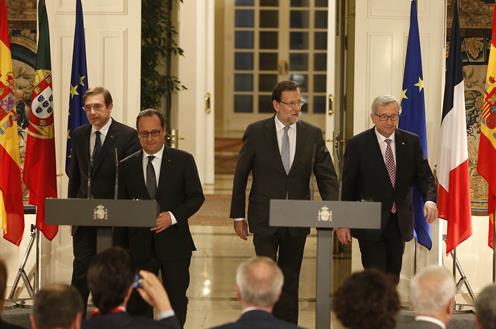The energy isolation of the Iberian Peninsula from the rest of Europe is hopefully coming to an end, or at least progress is expected to be made in that direction, following the 4 March 2015 signing of the Madrid Declaration by Spanish Prime Minister Rajoy, French President Hollande, Portuguese Prime Minister Passos Coelho, and European Commission President Juncker. The four met in Madrid, also with Climate Action and Energy Commissioner Arias Cañete and European Investment Bank President Hoyer. It was agreed that a High-Level Group would be set up in order to expedite energy interconnection efforts in South-West Europe and ensure timely implementation of ongoing and planned projects.
This is part of the Energy Union, which has been a top priority of the Juncker Commission (see recent Katoikos.eu article). The purpose is multifold, including the creation of a well-connected energy market, ensuring EU energy security and increasing independence from outside sources, increased use of renewable energies, and reduced energy prices. European Union funds in support of related projects may come from the Connecting Europe Facility (CEF) and the European Structural and Investment Funds. In addition, financing for South-West Europe electricity and gas interconnection projects is also expected from the proposed European Fund for Strategic Investment (aka Juncker Investment Plan), to which Spain has decided to contribute 1,5 billion euros.
A lot of work and money will be needed to reach the Europe-wide energy interconnection target of 10% by 2020 in South-West Europe. The 20 February 2015 inauguration of the Santa Llogaia – Baixàs high-voltage line between France and Spain was expected to bring the interconnection level up to 2.8%, very small in absolute terms but already double compared to what was in place before. This project received EU support to the amount of 225 million euros under the European Energy Programme for Recovery. Moreover, studies for a planned sub-sea cable connecting France and Spain under the Bay of Biscay have been supported with 3,25 million euros by the European Commission under the Connecting Europe Facility.


